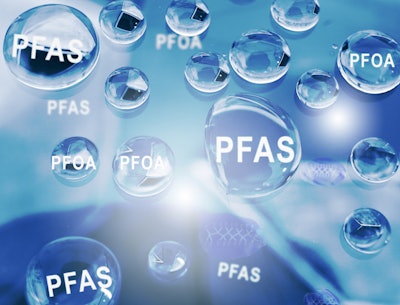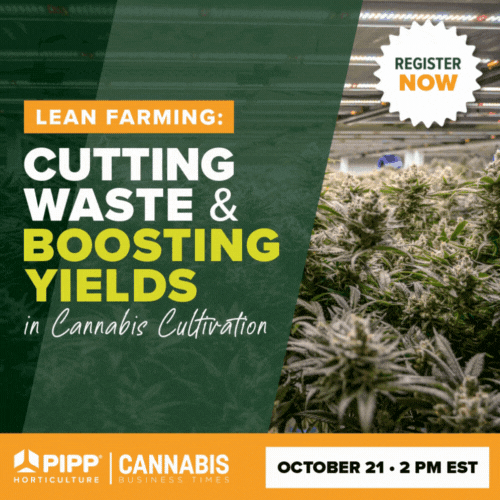
It is no secret that Cannabis sativa L. has proven useful in remediating a wide range of toxins from contaminated soil. Predominantly, because of hemp’s federal legality under the 2018 Farm Bill, the focus of research and analysis on the subject in the U.S. has been centered around that subspecies of the plant.
“Hemp has very good prospects as a phytoremediator …. Hemp is used to clean up metals, pesticides, solvents, explosives, crude oil, polyaromatic hydrocarbons, and toxins,” according to the National Library of Medicine.
Hemp has also been used to remove “forever chemicals” from the soil. The term “forever chemicals” refers to slow-to-degrade PFAS, or per- and polyfluoroalkyl substances, which “are a group of manufactured chemicals that have been used in industry and consumer products since the 1940s because of their useful properties,” according to the U.S. Environmental Protection Agency (EPA). There are thousands of different PFAS, the EPA reports, and they can be found in everything from drinking water and food — “for example in fish caught from water contaminated by PFAS and dairy products from livestock exposed to PFAS” — to food packaging, and household and personal care products. (The EPA provides a list of PFAS chemicals here.)
In October 2024, for example, Fast Company reported on an Indigenous tribe in Maine that “demonstrated that hemp plants had success removing some of these stubborn toxins from the soil.”
PFAS have increasingly been placed in the spotlight as scientific studies have found that PFAS exposure can cause adverse health effects, including cancer.
In October 2024, Stateline reported:
“Legislative momentum against PFAS has surged this year, as at least 11 states enacted laws to restrict the use of ‘forever chemicals’ in everyday consumer products or professional firefighting foam. … Meanwhile, lawmakers in some states also passed measures that require industries to pay for testing or cleanup; order companies to disclose the use of PFAS in their products; and mandate or encourage the development of PFAS alternatives, according to Safer States, an alliance of environmental health groups focused on toxic chemicals. In total this year, at least 16 states adopted 22 PFAS-related measures, according to the group. Since 2007, 30 states have approved 155 PFAS policies, the vast majority of them in the past five years.”
Cannabis sativa L.’s ability to absorb toxic chemicals, including PFAS, from the soil has been a significant feather in this historically controversial plant’s cap; however, it also has raised concerns about what happens to the toxins once absorbed by the plants, especially because PFAS are not commonly tested for in cannabis, unlike microbials, heavy metals and certain pesticides.
Northern Michigan University (NMU) researchers are studying hemp’s ability to absorb PFAS from the soil as well as its potential to break down the chemicals. “NMU Chemistry Professor Lesley Putman said the hope is that hemp will not only draw up PFAS from the ground, but ultimately be able to degrade them, unlike the typical and more costly remediation methods using granular activated charcoal or reverse osmosis,” reported NMU’s news outlet Northern Today.
“Even if hemp proves equally or more effective than activated charcoal in preventing PFAS from permeating the water table, ‘You're still left with plants that contain toxins,’” Putman told Northern Today. “NMU contracts with a company that safely removes and stores all toxic waste generated by her research, but a large-scale contaminated site solution is dependent on finding a way to degrade PFAS once they're taken up by the hemp plants.”
And then there is another concern: the potential accidental contamination of plants cultivated for human consumption, whether in cannabis or hemp.
“According to Bloomberg Law, there has been a seismic shift over the last two years in the legal landscape surrounding health and environmental damage as awareness of PFAS has expanded,” according to a 2023 alert from law firm McGlinchey. A “surge of lawsuits and additional enforcement risks” has followed, as has a “growing concern regarding the potential impact of regulatory focus on the cannabis industry,” the firm reported.
McGlinchey cited a case in Washington state that had “devastating” impacts on cannabis businesses. While not specifically centered on PFAS, the case illustrates the potential implications of regulatory scrutiny over potential cannabis contamination from soil and water toxins. An alert from the Washington State Liquor and Cannabis Board (WSLCB) noted cannabis’s high contaminant-absorption ability and stated that it had “detected a chemical, which may be harmful in the soil of a particular region of the state, known as dichlorodiphenyldichloroethylene (DDE).” (DDE is a chemical similar to the pesticide DDT “that can form when DDT breaks down,” according to the Agency for Toxic Substances and Disease Registry.)
While cannabis cultivators were not using the pesticide, they suffered the consequences of potentially contaminated crops.
“The WSLCB placed administrative holds on licensees operating in the relevant geographic area …, requested lists of all products produced by licensees in the previous eight months, and further requested that licensees conduct a recall on all products,” McGlinchey stated. “Additionally, the WSLCB disclosed that it will be testing potentially affected products currently on retail shelves and stated that further (unknown) action can be expected. The result has devastated the affected businesses, despite no improper conduct of their own.”
It seems unlikely that with the widespread mainstream use of the pesticide prior to an EPA ban on it in 1972 that DDT’s and/or DDE’s presence in soil is limited to Washington. “Americans sprayed more than 1.35 billion tons of the insecticide—nearly 7.5 pounds per person—on crops, lawns and pets and in their homes before biologist Rachel Carson and others sounded the alarm about its impacts on humans and wildlife,” reported Scientific American in its article “Consequences of DDT Exposure Could Last Generations.”
McGlinchey said cannabis businesses could “anticipate similar actions with respect to other contaminants, including PFAS. Potential PFAS contamination can enter cannabis products through various pathways such as irrigation water, fertigation, nutrient delivery systems, and soil, increasing the need for regular and ongoing testing to mitigate the possible risks of exposure.”
“PFAS that end up in consumer goods, such as cannabis, is a huge safety risk,” Seth Goldberg, then-partner at Duane Morris, told Beverage Information Group in early 2024. “And now we’re seeing corresponding litigation risks with PFAS where they have been subject to a growing number of product liability and consumer class action matters.”
McGlinchey noted several steps cannabis businesses can take to minimize the risk of contamination, including avoiding the reuse of wastewater and employing best practices for water management.
While that advice is directed at any cannabis business, a January 2024 article by Duane Morris attorney Ethan R. Feldman specifically cautioned cannabis beverage makers. The article, “Cannabis Beverage Manufacturers Should Pay Close Attention to Their Water Supplies,” cited a class action lawsuit against Health-Ade, a Southern California kombucha company, alleging the product contained PFAS and did not disclose that on the label. Health-Ade settled the suit in September 2024, though terms were not disclosed.
“The PFAS kombucha lawsuit should serve as a reminder to cannabis beverage manufacturers that they must be vigilant in complying with not only state regulations pertaining to cannabis manufacturing and distribution, but also must be mindful to appropriately handle PFAS-contaminated water the company uses to manufacture cannabis beverage products,” Feldman wrote.
“Traditionally we see cultivators adopting water filtration when their source water has known issues,” said Darrin Sanocki, water treatment category manager at Hydrofarm. “The raising awareness of PFAS is making more growers rethink what’s in their water. We always tell customers that the first step is ‘let’s find out by ordering a comprehensive water test.’ There are plenty of labs offering different mail-in water test kits including dedicated test kits for PFAS. After that we can discuss the mitigation strategy. Reverse Osmosis is most effective technology to remove almost any contaminants but there are other options proven to be effective against PFAS, such as nanofiltration or Granular Active Carbon (GAC).”
Cannabis businesses may also want to take precautionary steps when buying real estate for cannabis cultivation. AEI Consultants—a firm providing building, environmental, land and sustainability consulting, and property valuation services throughout North America—advises that when purchasing real estate, buyers include PFAS in a Phase I Environmental Site Assessment (ESA).
“While only PFOA and PFOS [specific types of PFAS] are currently required to be evaluated under ASTM E1527-21, it is strongly recommended to assess broader PFAS risks—especially if your property falls into a high-risk category (e.g., fire training areas, airports, industrial facilities, or agricultural land using biosolids),” according to a PFAS and real estate guide on the firm’s website. “Given the rapid pace of PFAS regulation, proactively identifying the potential presence of PFAS—including non-regulated compounds—during your current due diligence process helps avoid future liability, reduce risk of property devaluation, facilitate smoother future transactions or refinancing.”
Not to mention helping to prevent potential contamination of your cannabis or hemp crops.
As regulatory scrutiny and litigation increase, the cannabis and hemp industries—notably due to the plants’ high absorption abilities—could come under increased scrutiny as well. And preparing now could prevent a host of potential problems in the future.
For a free water consultation, click here.
Read more from Hydrofarm's most recent newsletter:
Sponsored: World-Class Growing Solutions


